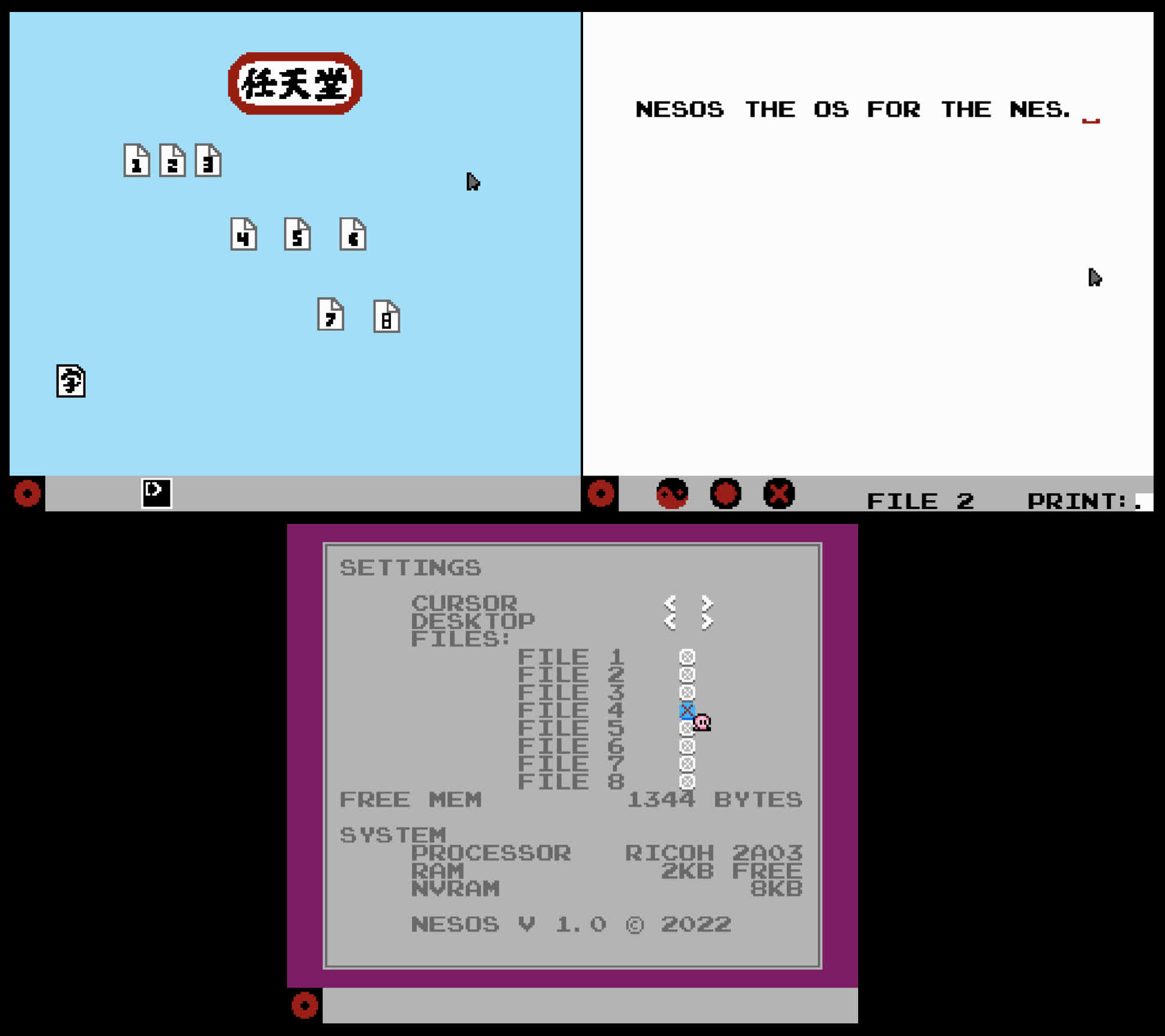
[ad_1]
In context: It used to be that only computers needed operating systems. However, times have changed, and now it seems like just about every electronic device we own needs one. Video game consoles, in particular, need middleman software to handle user input and manage files, but that wasn’t the case in the days of cartridge games.
Systems like the Atari 2600 or the Nintendo Entertainment System (NES) didn’t need sophisticated software to handle user input and games because the peripherals and cartridges communicated directly with the “brain” of the console. Nothing needed to be stored because games were hardwired.
Users only had the option of interacting with whatever cartridge was plugged in, so there wasn’t the need to allow them to move things around or jump from file to file. Plus, resources were minimal. There wasn’t any room for an operating system — or was there?
Apparently, if you are dedicated, you can develop an OS compact enough to run on an NES. YouTube Hobbyist channel Inkbox proved it a few weeks ago when it unveiled NESOS. It is a purely graphical OS with no command prompt, which is remarkable for several reasons.
First, graphical operating systems were rare when the NES launched in 1986. The two predominant computer interfaces were MS-DOS on the PC and ProDOS on the Apple IIc, both prompt-based systems.
Computers that did use GUIs that early were expensive business machines. Consumers had to wait until the early 1990s before finding PCs installed with Windows 3 (1990) and Apple’s System 7 (1991), and even then, GUIs didn’t create a revolution until later with Windows 95 in 1995 and System 8 in 1997.

Secondly, the NES is a real challenge to build a graphical OS on, considering it only has a couple of kilobytes of onboard RAM, and an NVRAM cartridge is required to store user-created files.
Inkbox pulled it off, but don’t expect anything grandiose. NESOS only has two applications — settings and a word processor.
The settings app shows basic system information. It also allows users to choose one of seven cursors and one of 53 desktop colors. Additionally, users can delete files from settings, which is vital considering the limited off-board NVRAM storage.
The word processor is much more complex yet is rudimentary by all current and past standards. Users are limited to 832 characters per file, with each keystroke costing one byte. That’s a maximum of nine text files for the standard 8KB of NVRAM on an NES cartridge.
Inputting a document is a chore with the NES standard controller. However, Inkbox managed to map out the keys for the Famicom keyboard that only saw release in Japan. It works much more efficiently than the controller if you are willing to shell out from $90-$400 to pick one up on eBay.
Inkbox documented the entire process in its YouTube video in the masthead. Users with equipment to flash a ROM are free to download NESOS from Inkbox Software’s website.
[ad_2]